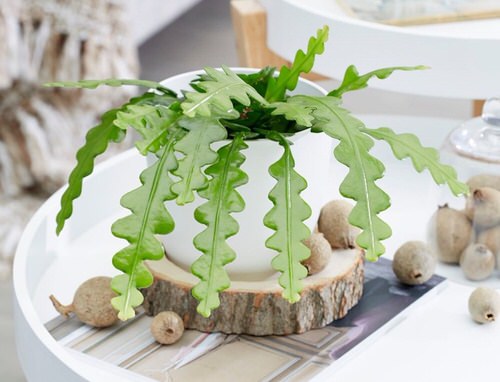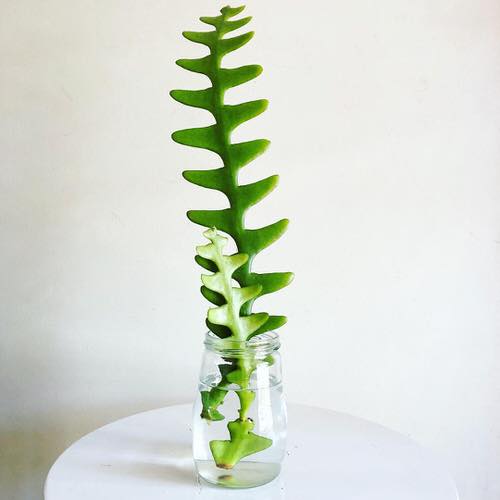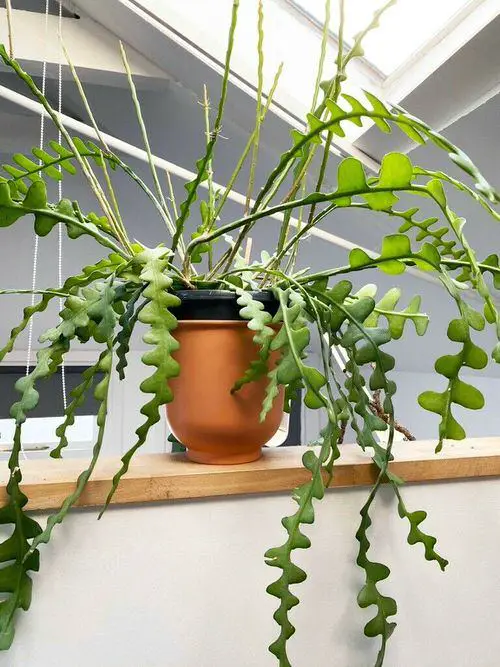Learn everything about How to Grow Fishbone Cactus to include this peculiar-looking plant in your collection! It also grows fast.

Fishbone Cactus is a quirky plant that seems to be trending these days! Follow our guide to know everything about How to Grow Fishbone Cactus to keep it thriving indoors!
Botanical Name: Epiphyllum anguliger
USDA Hardiness Zones: 10-12
Common Names: Rick Rack Cactus, Zig-zag Cactus, Fishbone Cactus
Here are the best tall cactus to grow indoors
Fishbone Cactus

This easy-to-care-for succulent plant is a perfect specimen for beginner gardeners with a black thumb. It looks snazzy with its zig-zag leaves and its beauty ten folds when the plant starts to bloom!
Propagating Fishbone Cactus

Propagating Fishbone Cactus is really easy from cuttings when the weather is warm, in spring to late summer. If you live in a frost-free climate, you can propagate it even in fall and winter. But the best time is when the weather is not very humid or cold.
In Water
- Using a pair of sharp and clean scissors, snip off a 5-7 inches long section from a healthy plant.
- Allow the cut end of cutting to dry and form callus.
- Place this cutting in a glass of water. Put it in a spot that receives bright but indirect light. Change the water once in 3-5 days.
- The cuttings will form roots in 3-5 weeks.
In Soil
- Allow the cutting to dry and form callus. Dip the end in a rooting hormone, and plant it in a pot filled with the succulent mix.
- Place the pot where it gets plenty of bright indirect light.
- Do not water the cutting till it shows a sign of growth. Before that, you can spray water around the soil if it’s looking bone-dry.
Pro Tip: Planting multiple cuttings in a pot will make for a full-looking plant!
Requirements for Growing Fishbone Cactus

Location
Native to Mexico, this plant grows as an epiphyte in evergreen rainforests and does best in dappled light. Give it a combination of bright, indirect daylight. Avoid exposing it to harsh afternoon sun for a long time in the regions where temperature floats above 100 F (38 C).
In the home, it’s a good idea to hang it near your east, west, or south-facing window. A north-facing window that won’t receive even indirect sunlight may not be suitable for growing the fishbone cactus.
Soil
Avoid using regular garden soil. Go for a pre-made growing medium that’s available for cacti in the market. Alternatively, check out our succulent soil recipes here to DIY that.
Watering
Unlike other succulents, fishbone cactus can tolerate moist soil. However, it’s best to water the plant only when the topsoil feels dry to touch.
Consistent overwatering is the quickest way to kill it, so avoid it at all costs. Also, the watering schedule depends a lot on the climate and the zone you are living in. For example, you need to water the plant more during dry and sunny weather.
Temperature
The plant loves a temperature above 50 F (10 C), which you can easily provide when keeping it indoors. Also, avoid placing it near hot air vents and air conditioners.
Taking Care of Fishbone Cactus

Hard water spots and dust can make the specimen look dull. You may need to wipe its unique leaves regularly with a soft cloth to maintain the shine.
Humidity
The plant loves moderately humid surroundings, so it will be a good idea to use a humidifier once in a while when the air is dry.
Fertilizer
It is best to feed it once every four weeks using a balanced 10:10:10 blend in one-quarter strength of the recommended dose on the fertilizer package. Avoid fertlizing the plant in winters and around the time when it blooms.
Pruning
If unattended, the plant can grow in all directions! To keep its appearance compact, prune its stems and make new plants from them.
Pests & Diseases
Keep an eye on mealybugs and aphids. They can be handpicked or use a strong jet of water to knock them off.
To save the plant from potential diseases, make sure it is never overwatered. Also, keep it well ventilated.


